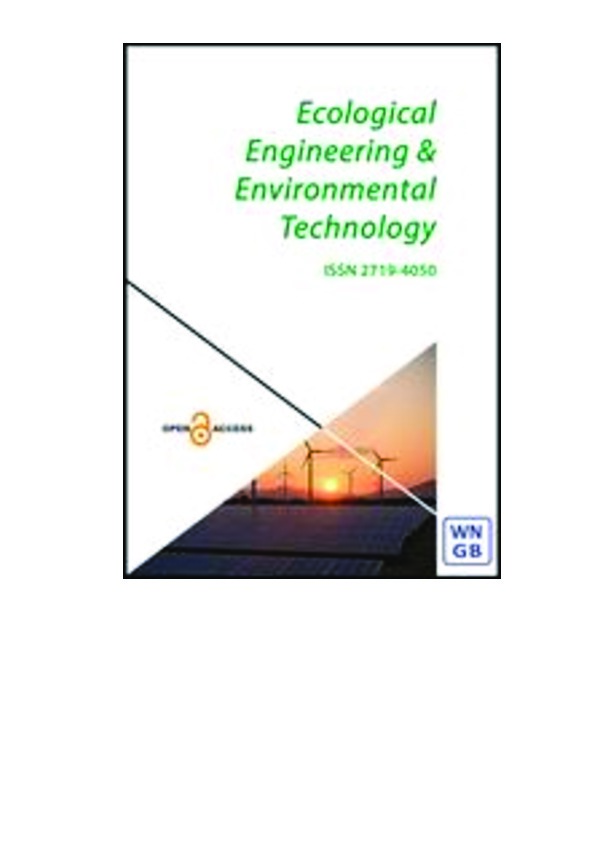id: 38441
Title: Agroecological assessment of technologies for growing legumes
Authors: Petrychenko V., Didur I., Pantsyreva H., Volynets Y.
Keywords: field protective forest belts, trees, ecological condition, suppression, environmental factors.
Date of publication: 2025-02-21 14:38:50
Last changes: 2025-02-21 14:38:50
Year of publication: 2025
Summary: The conducted research is devoted to the selection of the optimal assortment for certain growing conditions and preparations for seed treatment before sowing during the growing season, which is one of the important tasks not only for increasing the level of yield and productivity elements, but also for carrying out an agroecological assessment of the technology of growing leguminous crops using the example of soybeans. chickpeas and white lupine. It was established that the use of biological preparations for pre-sowing treatment of seeds, namely inoculants and retardants during the growing season, makes it possible to reasonably approach the planning of agrotechnical measures of cultivation on the basis of soil conservation in conditions of climatic changes. The main goal of the study is to carry out a comprehensive agroecological assessment depending on the varietal composition, seed inoculation and retardant concentration. A three-factor experiment was established in the conditions of the Vinnytsia region (Right-Bank Forest-Steppe of Ukraine) during 2018–2022. The material of the researches were varieties of domestic breeding: soybeans – Azimuth and Golubka, chickpeas – Skarb and Pegasus, white lupine – Veresnevyi and Chabanskyi, which were studied according to the following experimental scheme: control (without treatment), seed inoculation (treatment of seed material with a biological preparation), concentration retardant (without treatment, 0.5%, 0.75% and 1% solution). Variants of the experiment were placed by a randomized method in four repetitions. Field and laboratory studies were conducted on the following indicators: the formation of by-products, the content and volumes of accumulation of main nutrients in by-products, removal of nutrients from the soil and with the crop, as well as the balance of main nutrients according to generally accepted methods. Based on the manifestation of the studied signs, the option with seed treatment with the drug and two-time treatment of crops with the chlormequat-chloride retardant was selected: the first – in the phase of the 3rd trifoliate leaf, the second – in the budding phase. The best variants of the experiment with high indicators of the evaluation of technologies for the cultivation of leguminous crops are recommended. It was established that the most economical use of mineral nitrogen and phosphorus among the studied types of leguminous crops has chickpeas, and the greatest consumption is soybean. Soybeans has the most positive effect on the balance of mineral potassium in the soil, and chickpeas have the most negative effect. Of all the options, only Pegasus chickpea cultivation with pre-sowing seed treatment without retardant ensures a positive nitrogen balance in the soil – plus 3.56 kg/ha.The conducted research is devoted to the selection of the optimal assortment for certain growing conditions and preparations for seed treatment before sowing during the growing season, which is one of the important tasks not only for increasing the level of yield and productivity elements, but also for carrying out an agroecological assessment of the technology of growing leguminous crops using the example of soybeans. chickpeas and white lupine. It was established that the use of biological preparations for pre-sowing treatment of seeds, namely inoculants and retardants during the growing season, makes it possible to reasonably approach the planning of agrotechnical measures of cultivation on the basis of soil conservation in conditions of climatic changes. The main goal of the study is to carry out a comprehensive agroecological assessment depending on the varietal composition, seed inoculation and retardant concentration. A three-factor experiment was established in the conditions of the Vinnytsia region (Right-Bank Forest-Steppe of Ukraine) during 2018–2022. The material of the researches were varieties of domestic breeding: soybeans – Azimuth and Golubka, chickpeas – Skarb and Pegasus, white lupine – Veresnevyi and Chabanskyi, which were studied according to the following experimental scheme: control (without treatment), seed inoculation (treatment of seed material with a biological preparation), concentration retardant (without treatment, 0.5%, 0.75% and 1% solution). Variants of the experiment were placed by a randomized method in four repetitions. Field and laboratory studies were conducted on the following indicators: the formation of by-products, the content and volumes of accumulation of main nutrients in by-products, removal of nutrients from the soil and with the crop, as well as the balance of main nutrients according to generally accepted methods. Based on the manifestation of the studied signs, the option with seed treatment with the drug and two-time treatment of crops with the chlormequat-chloride retardant was selected: the first – in the phase of the 3rd trifoliate leaf, the second – in the budding phase. The best variants of the experiment with high indicators of the evaluation of technologies for the cultivation of leguminous crops are recommended. It was established that the most economical use of mineral nitrogen and phosphorus among the studied types of leguminous crops has chickpeas, and the greatest consumption is soybean. Soybeans has the most positive effect on the balance of mineral potassium in the soil, and chickpeas have the most negative effect. Of all the options, only Pegasus chickpea cultivation with pre-sowing seed treatment without retardant ensures a positive nitrogen balance in the soil – plus 3.56 kg/ha.
URI: http://socrates.vsau.org/repository/getfile.php/38441.pdf
Publication type: Статті Scopus
Publication: Ecological Engineering and Environmental Technology. 2025. Vol. 26, Issue 3. P. 393-403. DOI: https://doi.org/10.12912/27197050/200442
In the collections :
Published by: Адміністратор
File : 38441.pdf Size : 674574 byte Format : Adobe PDF Access : For all

| |
|
|